A Return to Child Labor? Which Side Are You On?
A look at the photographer who helped end child exploitation in the U.S., the push for more children in the 21st century workforce, and ways we can all foster justice
Less than 100 years after most forms of oppressive child labor were abolished, efforts are being made to usher more children into the U.S. workforce.
The Fair Labor Standards Act (FLSA) of 1938 was a significant part of Franklin Delano Roosevelt’s "New Deal." Though initially excluding agricultural workers, the law immediately changed the conditions for millions of workers across the United States.
The FLSA enshrined the eight-hour work day and forty-hour work-week. It also prohibited children under eighteen from doing most dangerous jobs and limited the number of hours they could work, ensuring wage work would not interfere with schooling. The employment age minimum was set at 14.
The educator and photographer, Lewis Hine helped build public pressure on elected officials to reduce and strictly regulate child labor. In 1907, Hine left his job as a teacher to document child working conditions for the National Child Labor Committee. Just as animal rights activists are often threatened for revealing the stomach-turning conditions of factory farming, children's rights advocates faced real threats when photographing the behind-the-scenes reality of child labor. A slight man standing just 5 feet and 7 inches tall, Hine wrote,
"I have a number of times been very near getting what has been coming to me from those who do not agree with me on child labor matters."
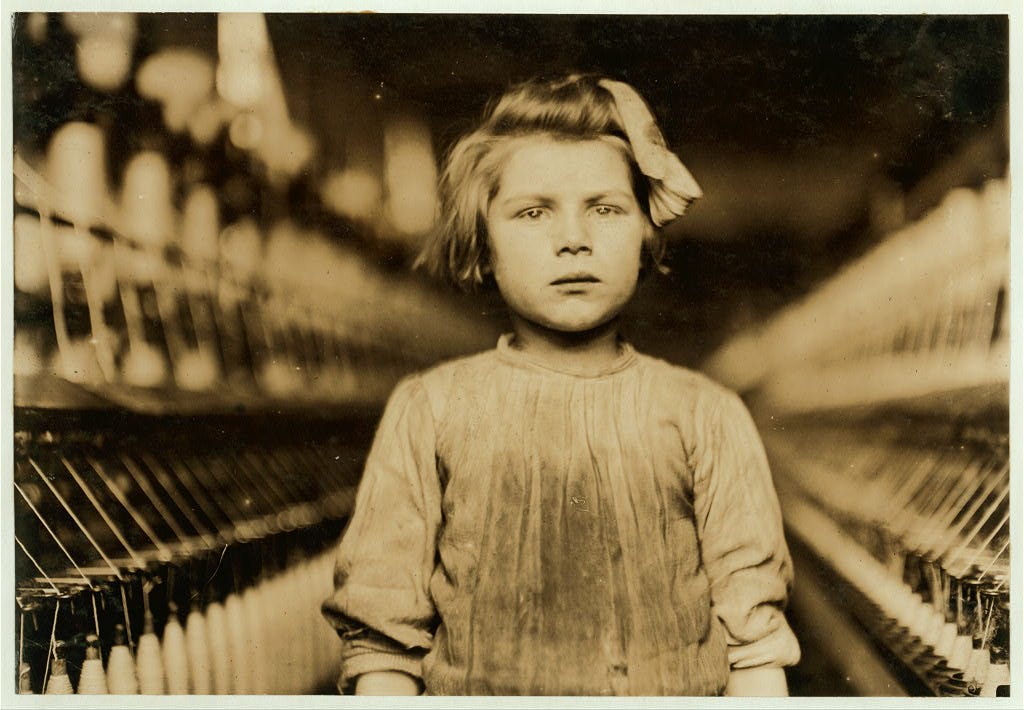
Just as animal rights activists are often threatened for revealing the stomach-turning conditions of factory farming, children's rights advocates faced real threats when photographing the behind-the-scenes reality of child labor.
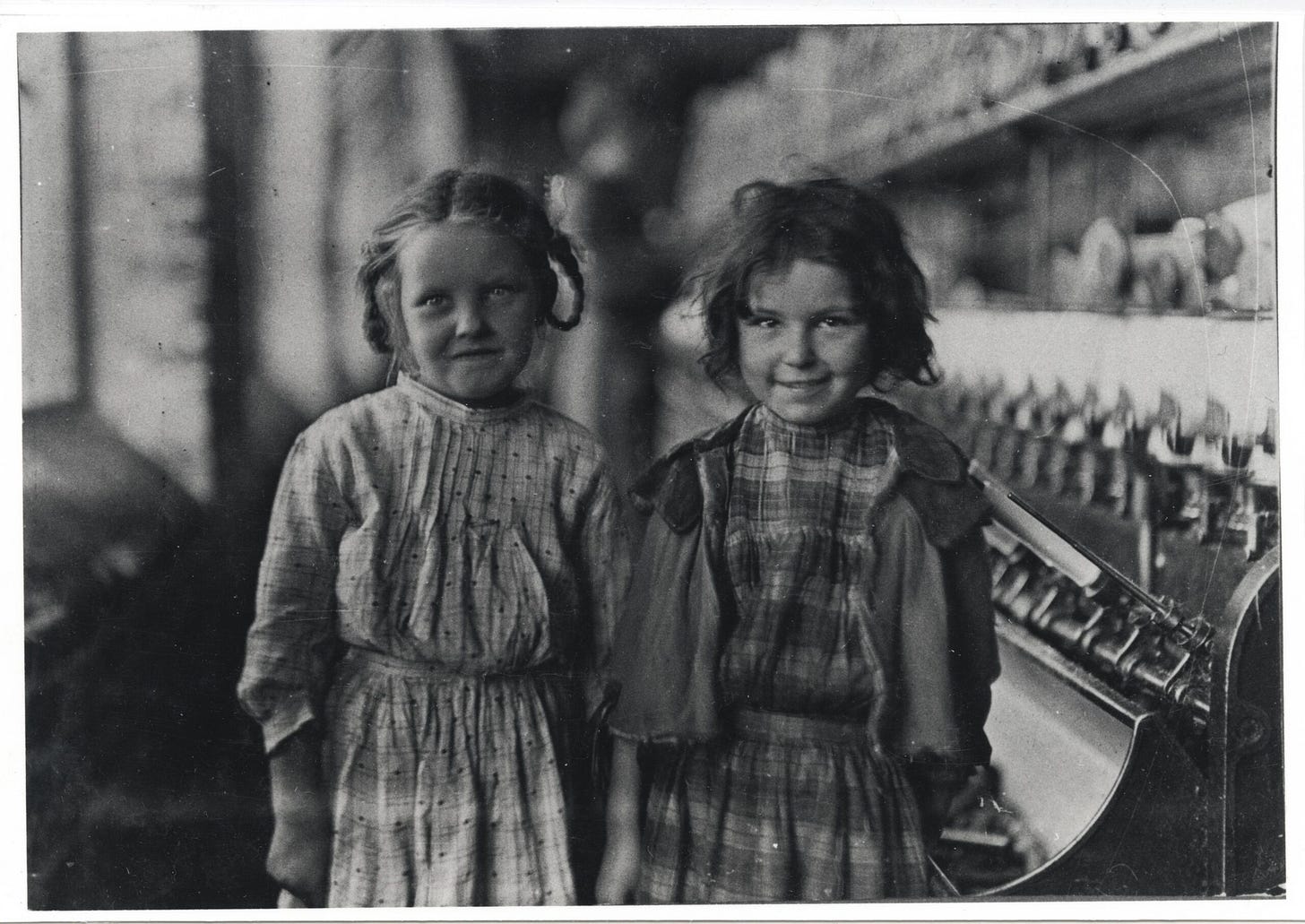
Hine used his photography to explore the lives of everyday people. He photographed immigrants arriving to Ellis Island in New York Harbor and workers building the Empire State Building. He also photographed the American Red Cross's World War I relief efforts in Europe, drought relief in the southern U.S., and mountain life in eastern Tennessee.

Documenting child labor uniquely required cunning. Hine and his colleagues utilized disguises and cover stories to gain access to the children and avoid physical attack. Photo historian Daile Kaplan wrote that Hine assumed various identities including
“Bible salesman, postcard salesman, and industrial photographer making a record of factory machinery.”
The result was thousands of photos and informative captions on the children. Hine’s photography is widely recognized for it's artistic as well as documentary value. The examples of his work above and below allow us to see more than the plight of these child workers, we also see their humanity.
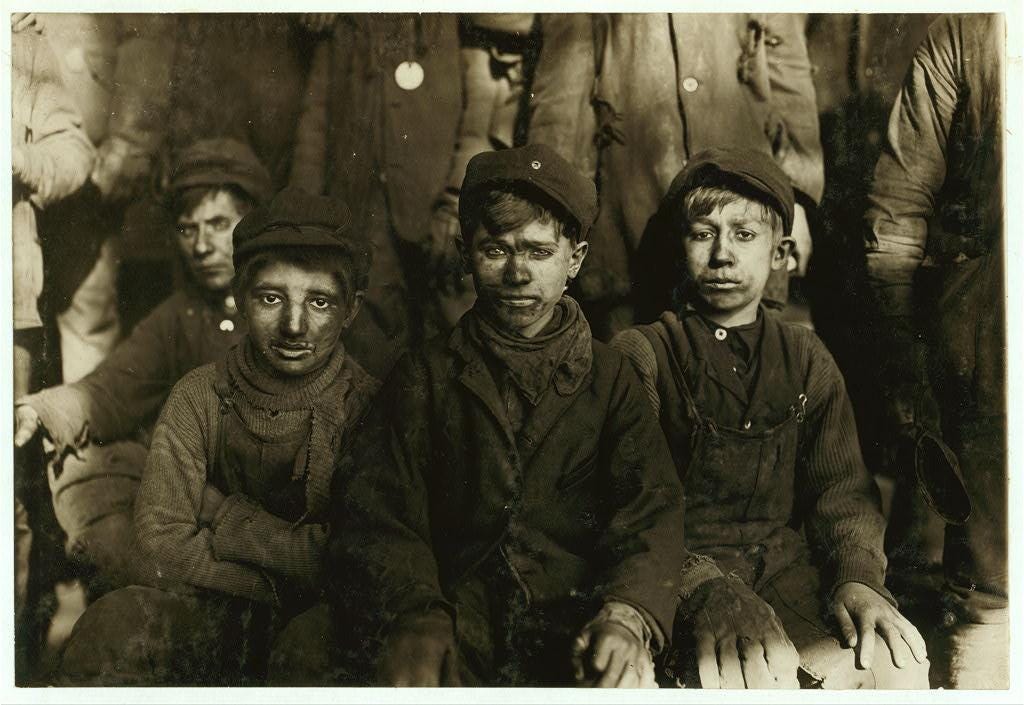
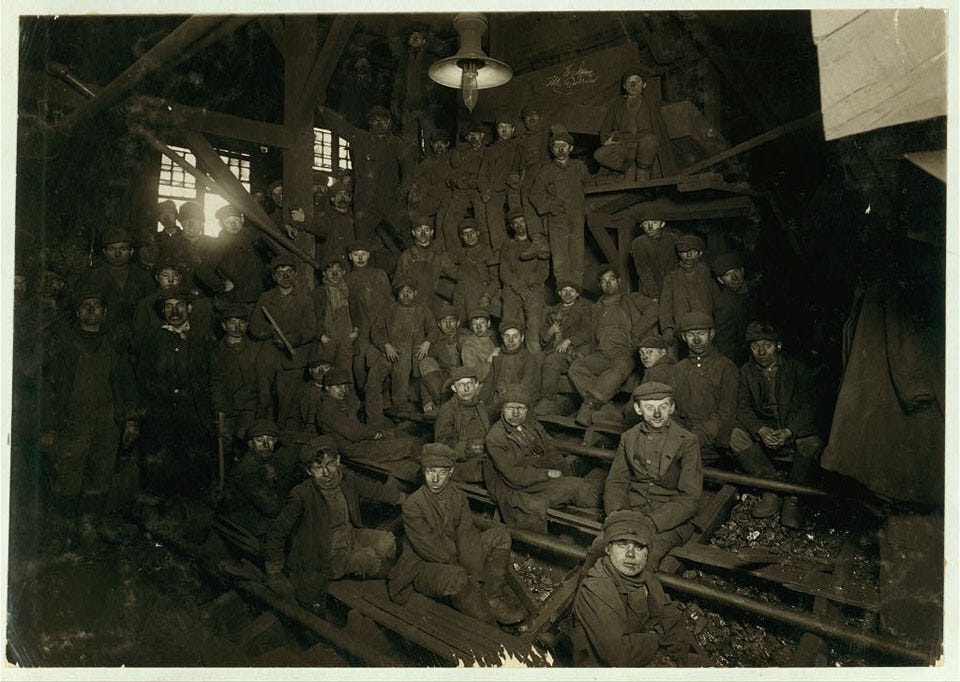
Hine’s visceral photography confronted polite society with the dehumanizing realities of child labor. In "The High Cost of Child Labor" (1914), Hine drew on his experience surveying children’s working conditions to write,
"The children start off with happy hearts and faces for work…at first. And they end—in the Human Junk Pile, before their lives are fairly well started. A lad makes a misstep, falls into a machine, loses his fingers and ‘ain’t good for work no more.'"
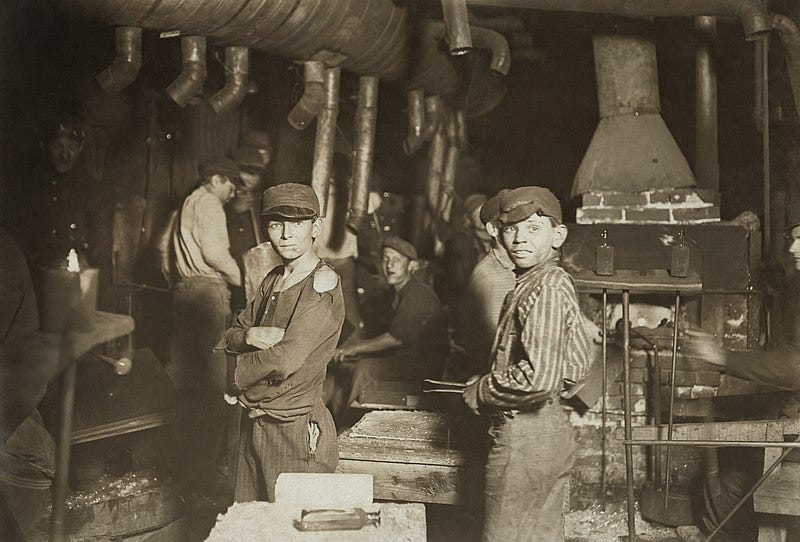
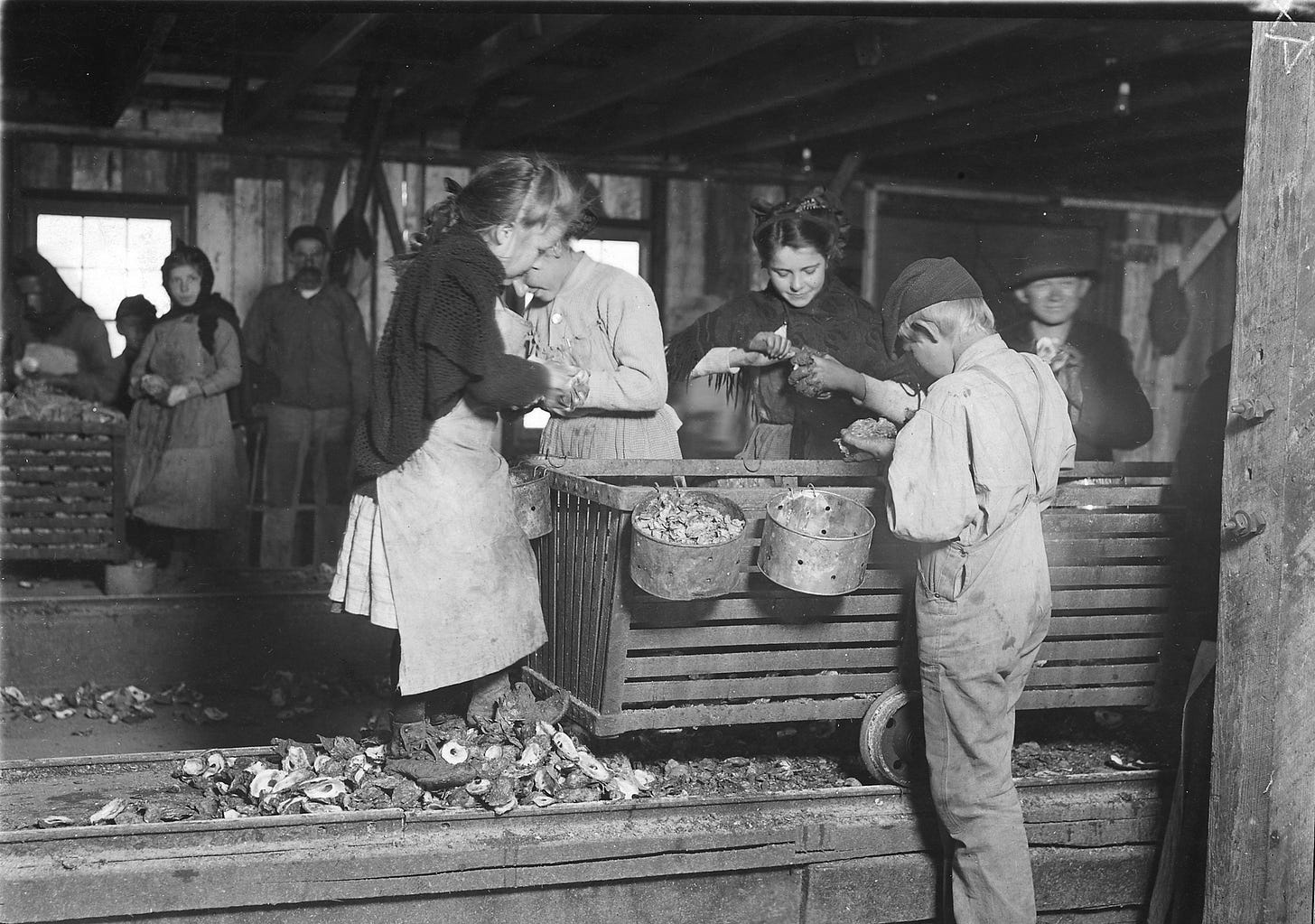
Hine, a private man said to have socialist sympathies, soberly stated the profit-motive behind the pretended altruism of industry.
“The object of employing children is not to train them, but to get high profits from their work.”
Read part one of the series on Humanities and Social Change
Loosening Strictures on Child Labor
Less than one hundred years after the FLSA reigned in child labor, efforts are being made to usher more children into the U.S. workforce. State legislatures are seeking to weaken strictures on youth employment. States including Iowa, Ohio, Minnesota, and Wisconsin legislatures have sought to pass bills extending working hours for children. These efforts are aimed at addressing what industry interests describe as "labor shortages" and labor rights groups describe as owners' unwillingness to fairly and reasonably compensate laborers.
In January 2023, an Iowa bill (Senate File 167) was introduced that would permit children as young as fourteen to engage in manufacturing, mining, loading trucks and railroad cars, and food service prep, provided they receive an exception from the director of the Department of Workforce Development or Department of Education.
The exception requires the work to be done with “adequate supervision and training,” not to "interfere with the health, well-being, or schooling of the minor enrolled in the approved program,” and for the student to be part of "an approved work-based learning program, registered apprenticeship, career and technical education program, or student learner program…." The bill would also allow teens, ages 16 and 17, to serve alcoholic beverages in some settings.
In its current form, the Iowa law would limit employer civil penalty to $10,000 per infraction. It would also shield employers from civil liability when "arising from the student's negligent act or omission" and
“for any claim for bodily injury to the student or sickness or death by accident of the student arising from the business’s negligent act or omission during the student’s participation in the work-based learning program at the business or worksite.”
Not coincidentally, this legislation is being rolled out at the same time working adults—from railway workers to baristas—are increasingly clamoring for greater liberties in the workplace, dignified work conditions, and a more reasonable share of the profits they generate. Efforts to expand the legal opportunities to hire children are also happening at the same time labor violations involving minors are increasing.
Illegally Employed Children of the Present
The U.S. Department of Labor identified more than 3,800 violations of child labor laws in 2022, a more than 25-percent increase from the pre-pandemic violations of 2019. Additionally, 688 minors were determined to be working in hazardous occupations, a 25-percent increase from 2019.
In February 2023, one of the nation's largest food safety sanitation companies, Packers Sanitation Services, Inc., has paid more than one million dollars in fines for illegally employing children. The Department of Labor determined that the company employed at least 102 children, ages 13 to 17, in hazardous working conditions in eight states, in 2022. The children were given overnight shifts and were tasked to work with hazardous chemicals and clean “meat processing equipment including back saws, brisket saws and head splitters."
On February 22, 2023, the Department of Labor reported that its federal investigation found the owners of seven Pennsylvania McDonald's stores violated multiple child labor regulations. The owners of the fast food locations, Thomas Ducharme and the DuCharme Organization, permitted 154 minors, ages 14 and 15, to work
“Before 7 a.m., more than 3 hours per day and after 7p.m. on school days.
“Later than 9 p.m. on days between June 1 and Labor Day, when they may legally work until 9 p.m.
“More than 8 hours on a non-school day, and more than 18 hours a week during a regular school week.”
Nine of the minors under the age of 16 were also allowed to operate the deep fryers at two locations, in violation of federal regulations. Pittsburgh Wage and Hour District Director, John DuMont, noted that there has been “an alarming increase in the number of young workers employed in violation of federal child labor laws” since 2018. The owners of the Pennsylvania McDonald’s stores who violated these laws will pay less than $100,000 for the infractions. Meanwhile the wider costs of child labor go untallied. As Lewis Hine put it in 1914, “Whatever industry saves by child labor, society pays over and over.”
The fact that such backslides on child labor rights are happening less than one hundred years after the Fair Labor Standards Act was passed reminds us of the limits of making “victory” our aim. Just as there are no final revolutions, there is no final achievement of a permanent justice. We must continuously strive not only to make progress but also to retain it.
Please share and like this post by clicking the heart icon.
Invite Dr. Nall to Speak
Dr. Nall delivers energetic live presentations and engaging workshops on the subjects featured in Humanities in Revolt. Those interested in booking a workshop or talk can get in touch through Facebook or by leaving a comment.
For more about my work go to JeffreyNall.com and find me on Twitter, Facebook, and Instagram.



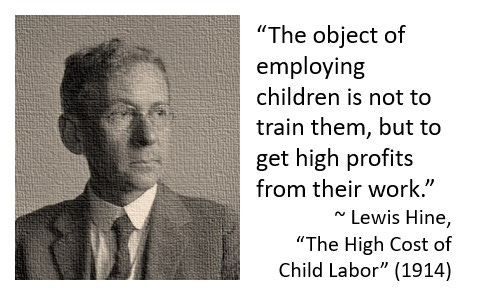

My dad (born in 1927) had to get up in the middle of the night to work on a dairy farm before school. He did poorly in school bc he slept most of the time. He ended up quitting at age 17 after reaching only the 7th grade. My dad was a very smart man, he had a quick wit to complement his intelligence. I often wonder what his life would have been like if he hadn't been too tired to learn.
Lots to think about, thanks for writing and sharing this,really powerful and important.